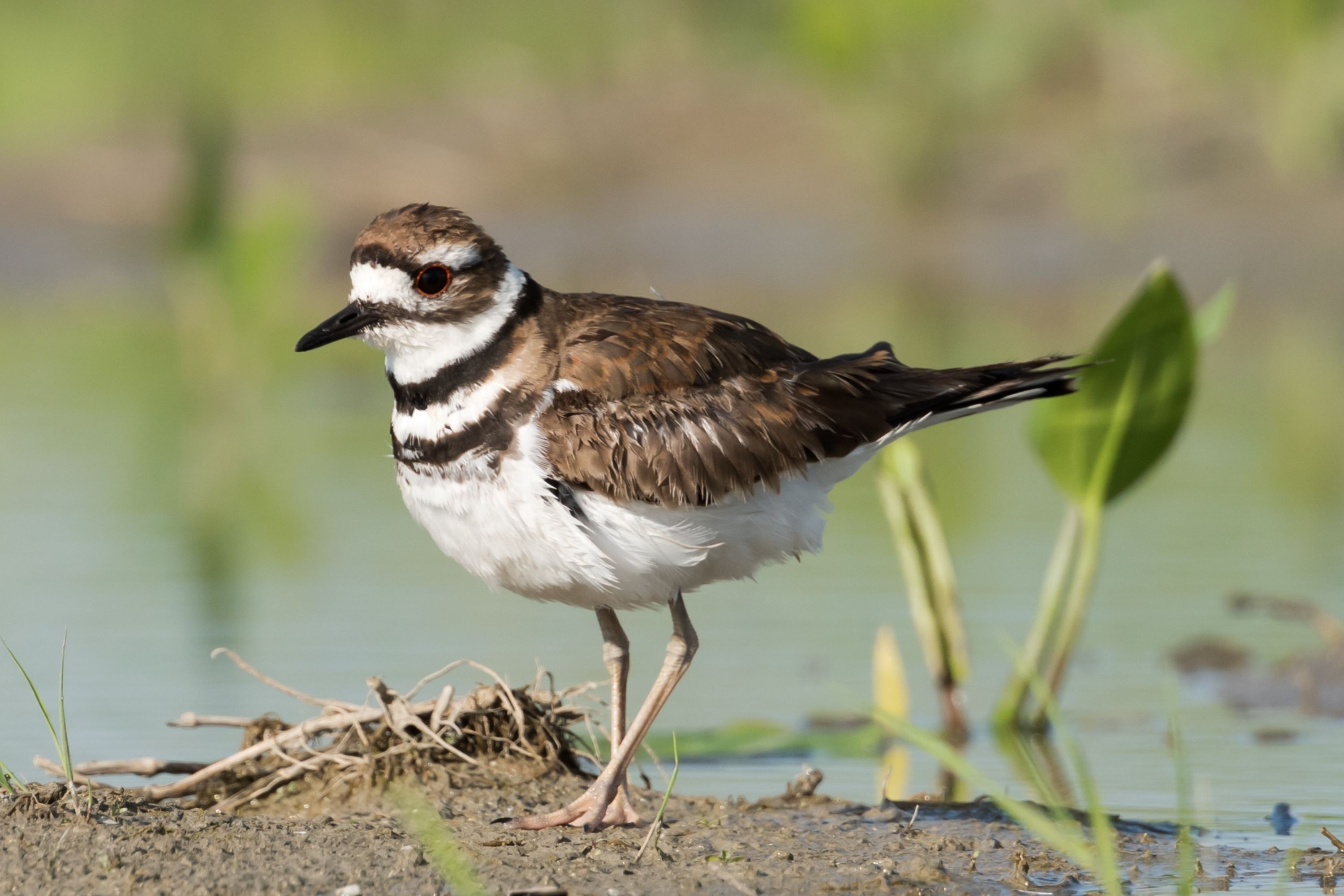Killdeer
(Charadrius vociferus)

Description
Charadrius vociferus, commonly known as the Killdeer, is a small species of bird that is native to North and South America. They are part of the plover family, and are known for their distinctive call, which sounds like "kill-deer, kill-deer." In this article, we will provide a comprehensive overview of the Killdeer, including their habitat, behavior, diet, and breeding habits. Physical Characteristics The Killdeer is a small bird, measuring between 20-28 cm in length, with a wingspan of 46-48 cm. They have a distinct black and white band across their chest, with brown feathers on their back and wings. Their eyes are large and dark, with a distinctive white eye ring around each eye. They have a long, thin beak that is adapted for catching insects and small invertebrates. Habitat and Distribution Killdeer are found throughout North and South America, from Alaska and northern Canada, down to the southern tip of South America. They can be found in a variety of habitats, including grasslands, fields, wetlands, and shorelines. They are particularly well adapted to nesting in open areas with little vegetation, such as gravel roads, rooftops, and other man-made structures. Behavior The Killdeer is a very active bird, and is often seen running and darting around on the ground in search of food. They are also very vocal, and their distinctive call can often be heard from a distance. Killdeer are known for their "broken-wing" display, in which they feign injury to lead predators away from their nests or young. Diet Killdeer are omnivores, and their diet consists mainly of insects, small invertebrates, and seeds. They are particularly fond of beetles, grasshoppers, and other insects that can be found in open grassy areas. They will also eat small snails, worms, and other invertebrates that they find in the soil. Breeding Habits Killdeer are monogamous, and mate for life. They typically breed between April and August, and will lay 3-5 eggs in a small depression in the ground. The eggs are speckled and blend in with the surrounding soil, making them difficult to spot. Both parents take turns incubating the eggs, and the eggs typically hatch after about 24 days. Once the eggs hatch, the parents will continue to care for the chicks, feeding them insects and other small invertebrates. The chicks are born with downy feathers and are able to run around shortly after hatching. They are precocial, meaning that they are able to feed themselves and do not rely on their parents for long. Threats and Conservation Killdeer are not considered a threatened species, and are listed as least concern on the IUCN Red List. However, they are vulnerable to habitat loss and disturbance, particularly from human development and agriculture. They are also at risk from predators such as cats, dogs, and birds of prey. Conclusion In conclusion, Charadrius vociferus, or the Killdeer, is a small but fascinating bird that is found throughout North and South America. They are known for their distinctive call, as well as their active behavior and unique breeding habits. While they are not considered a threatened species, they are vulnerable to habitat loss and other human activities, and it is important that we work to protect their habitats and ensure their continued survival.
Taxonomic tree:







